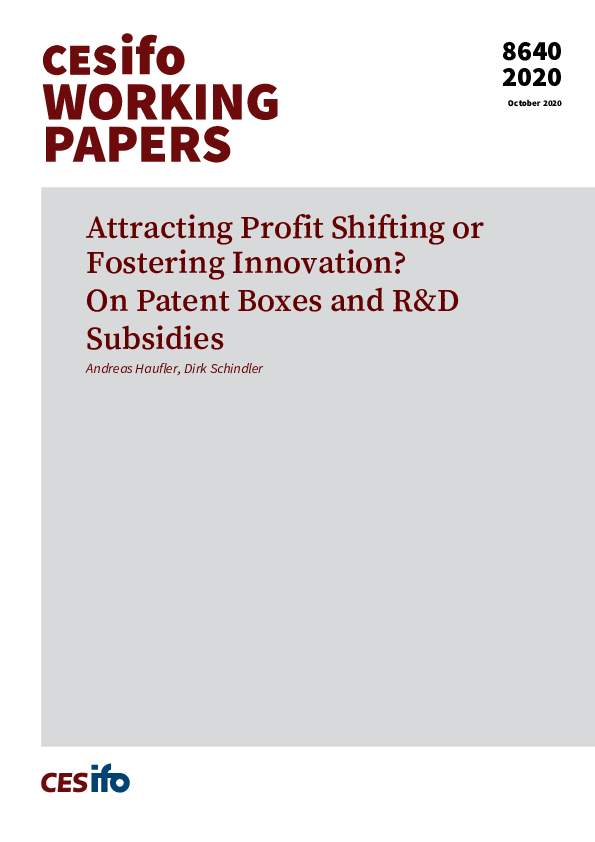Attracting Profit Shifting or Fostering Innovation? On Patent Boxes and R&D Subsidies
CESifo, Munich, 2020
CESifo Working Paper No. 8640

Many countries have introduced patent box regimes in recent years, offering a reduced tax rate to businesses for their IP-related income. Patent boxes are supposed to increase innovative activity, but they are also suspected to aim at attracting inward profit shifting from multinational firms. In this paper, we analyze the effects of patent box regimes when countries can simultaneously use patent boxes and R&D subsidies to promote innovation. We show that when countries set their tax policies unilaterally, innovation is fostered, at the margin, only by the R&D subsidy. The patent box tax rate is instead targeted at attracting international profit shifting, and it is optimally set below the corporate tax rate. With cooperative tax setting, the optimal royalty tax rate is instead equal to, or even above, the statutory corporation tax. Hence, patent box regimes emerge in the decentralized policy equilibrium, but never under policy coordination. Enforcing a nexus principle, as proposed by the OECD, is helpful to mitigate harmful competition for paper profits, but it comes at the price of increased strategic competition in direct R&D subsidies to attract physical R&D units instead of intangible patents.
Public Finance
Trade Policy